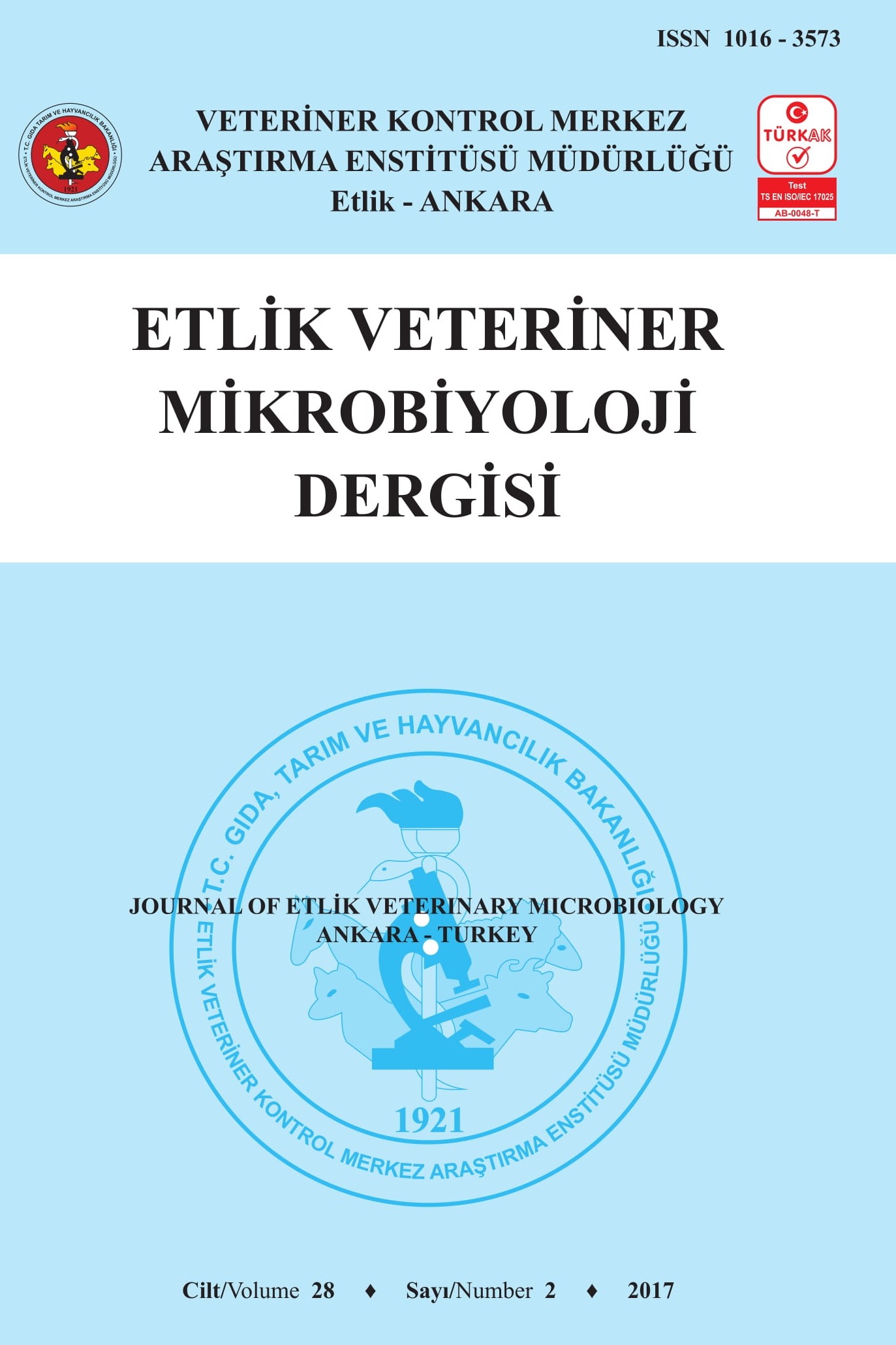
Etlik Veteriner Mikrobiyoloji Dergisi
Yazarlar: Özlem ŞAHAN YAPICIER
Konular:Veteriner Hekimlik
Anahtar Kelimeler:Salmonella,QPCR,Tanı
Özet: Salmonella Gallinarum and Salmonella Pullorum cause important disease of chicken, the others are turkey, quail, pigeon, sparrow and parrot, which are host specific and biovars of each other. Therefore, rapid and reliable meth-ods to detect these poultry-associated Salmonella serotypes are necessary for efficient control of Salmonella in poultry. For this purpose, a rapid qPCR diagnostic kit including S. Gallinarum / Pullorum and internal control targeted reactions was developed simultaneously to detect and differentiate biovars. S. Gallinarum/Pullorum reference and S. Gallinarum strains that were developed from VKMAE Poultry Laboratory were performed using qPCR method. In this study, sensitivity and specificity of qPCR analysis were evaluated. The results showed that the developed qPCR method was able to detect Salmonella Gallinarum/Pullorum correctly. Since the ease of use, reliability, technically simple, full automation, specific, sensitive and fast, the qPCR method is thought to provide more advantages in the diagnosis and differentiation of these biovars.